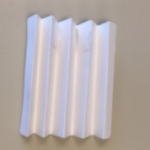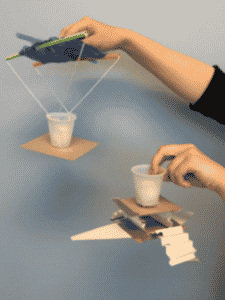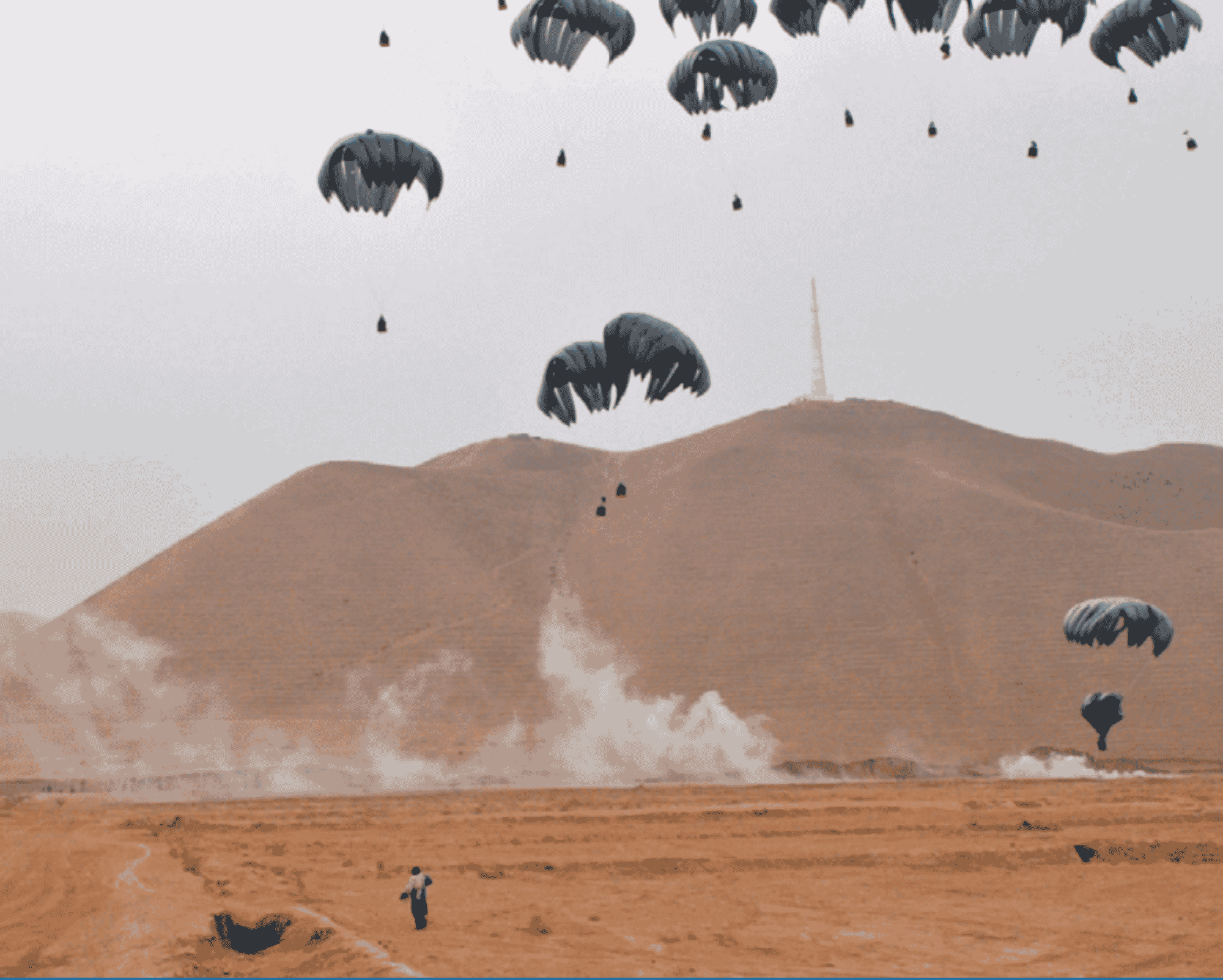Overview
Materials
Per Pair:
|
Supplies to Have on Hand:
|
Instructions
- Introduce the challenge and note that students can’t cover the cup to keep the ball inside as part of their design.
- Discuss two ways that engineers ensure that a container lands safely after falling from a great height:
 Parachutes slow the fall of the container via air trapped in the canopy, the fabric that puffs out into a balloon shape.
Parachutes slow the fall of the container via air trapped in the canopy, the fabric that puffs out into a balloon shape.- Shock absorbers lessen the impact upon landing. Demonstrate one type of shock absorber by folding an index card (use an accordion fold), compressing it, and allowing it to decompress. Note that their own bodies act similarly when they jump off a step: they bend their back and knees to absorb some of the energy and break the fall. Ask students to jump up and down and notice how their body acts like a spring.
 Organize students into pairs and tell them to come up with a design on paper for their device.
Organize students into pairs and tell them to come up with a design on paper for their device.- Distribute supplies, show students where optional supplies are located, and tell them to build their safe landing device.
- Test each design by dropping it starting at 1 foot. If the device fails, tell the pair to redesign and try again. If the device succeeds, try dropping it from greater heights.
Guiding questions
-
Which materials could help to soften the cup’s landing?
-
How might you create a parachute to slow the container’s fall?
-
How can you make sure the cup doesn’t tip over as it is falling?
Engineering & science connections
- A canopy is the part of a parachute that fills with air.
Air trapped in the canopy slows the fall of a parachute because of air resistance, or the force of the air pushing against the canopy. - A shock absorber is used to absorb the energy of the impact when gravity slams something into the ground. The leather or rubber on the bottom of our shoes cushions our feet as we walk. Springs also make good shock absorbers.
- When people need food, medicine, and life-saving supplies that must be airdropped because of natural disasters or war, engineers have to make sure that the supplies land safely, no matter what height they fall from.
This activity was provided by Design Squad Global.
DESIGN SQUAD GLOBAL is produced by WGBH Boston. Major funding is provided by the National Science Foundation. Project funding is provided by the Lemelson Foundation. The DESIGN SQUAD GLOBAL material is based on work supported by the National Science Foundation under Grant No. 1422236. Any opinions, findings, and conclusions or recommendations expressed in this material are those of the authors and do not necessarily reflect the views of the National Science Foundation. © WGBH Educational Foundation.


0 Comments